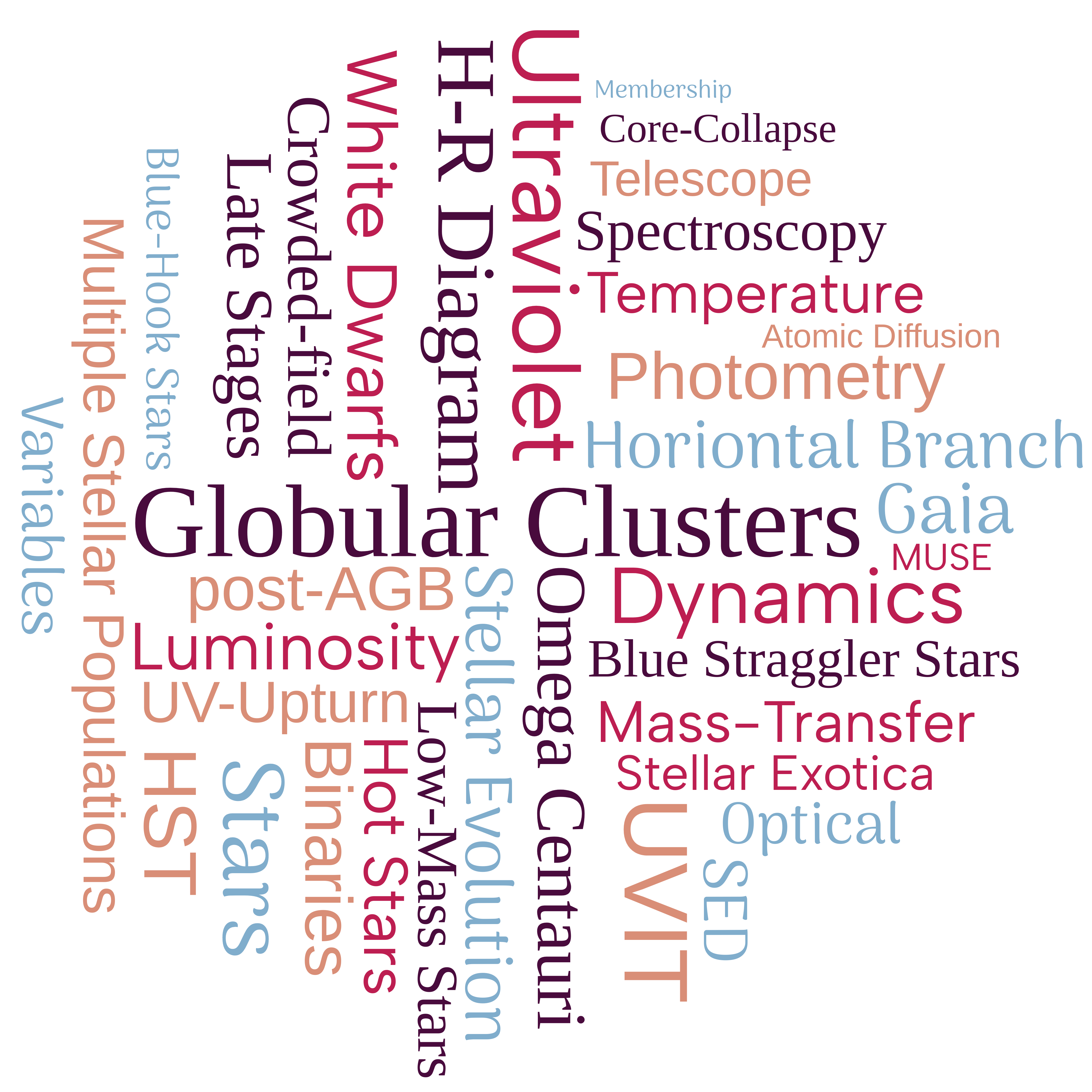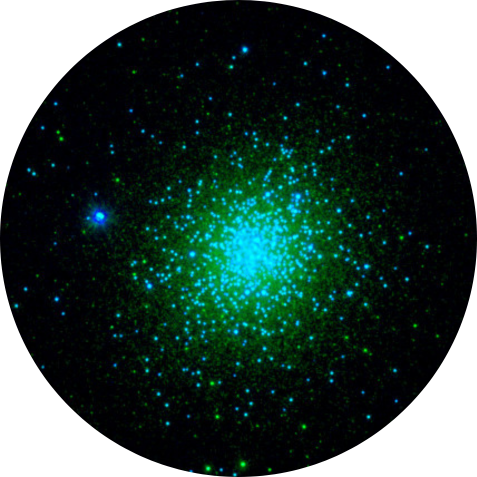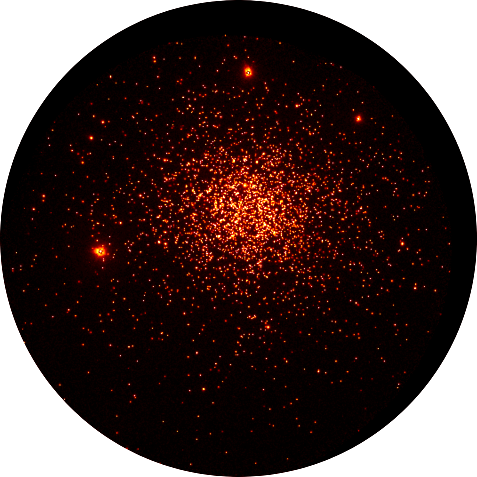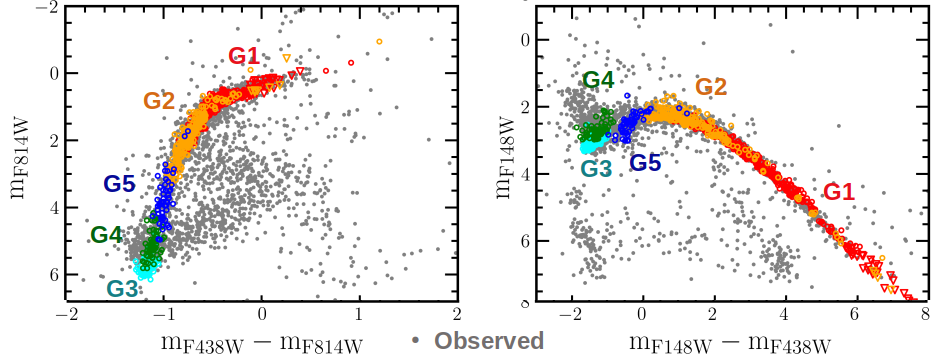
I study Globular Clusters (GCs) in the Milky Way, which are some of the oldest objects in the Universe. These dense systems host UV-bright stellar populations that exist in various evolutionary phases such as Horizontal Branch (He-core burning), Post-Horizontal Branch (Post-He-Core Burning), White Dwarf and so on. My work involves observation and characterization of these sources to improve the number statistics and shed light on their poorly understood evolutionary pathways. I also work on uncovering the formation channels of exotic sources like blue straggler stars and close binaries in GCs which are formed as a result of the high rate of dynamical encounters in these dense environments. Two of my works are highlighted below.
UV-bright Stars in Globular Cluster NGC 2808
NGC 2808 is a dense GC with significant fractions of both red and blue horizontal branch stars. The details regarding how these sources evolve after He-core burning is not understood well. We tried to investigate this by carrying out the first complete census and characterization of UV-bright members in this GC using archival images from UVIT complemented by other published catalogs. Contrary to canonical expectations, we found that majority of the post-He-core burning stars in this GC do not have sufficient envelope mass to ascend the Asymptotic Giant Branch and they directly become White Dwarfs. See this paper for more details.
Multiple Stellar populations in Omega Centauri
Omega Centauri is the most massive GC in the Galaxy. Although it is now widely known that GCs host stellar populations with differences in chemical composition and/or age, there is still no consensus on the details of how multiple stellar populations originate. We carried out the first comprehensive FUV observations of Omega Centauri to obtain constraints on its complex multiple stellar populations. By modelling the observed horizontal branch morphology of this GC in the UV-optical color-magnitude diagrams, we found five subpopulations with specific ranges of age, Fe/H] and He mass-fraction values. These estimations can help provide important constraints on the formation models of Omega Centauri. See this paper for more details.
See more: Publications • Talks



